As far as odd-looking creatures go, nautiluses are really up there. There are six different species of this odd swimmer, all of which look like a swimming seashell stuffed with an octopus-like creature inside. In reality, these creatures are related to octopuses, but they are in their own taxonomical family. They are in the class Cephalopoda, along with squid, octopus, and cuttlefish, but they are in the family Nautilidae. Read on to learn about the nautilus.
Description of the Nautilus
These cephalopods grow their own shells, much like a snail. They can pull themselves all the way inside their shells when threatened, and use two thick tentacles to create a “hood” to block the opening of the shell.
The inside of the shell is lined with chambers, which they fill with gas to keep themselves neutrally buoyant, letting them float in the water. All of the internal organs are also kept safely inside the shell, only the eyes and tentacles show when the nautilus emerges.
Interesting Facts About the Nautilus
These odd-looking creatures truly are one-of-a-kind. They are unique among cephalopods in their body structure, and they are the only living members of their family. Read on to learn more fun facts about these animals.
- Shallow Swimmers – Most nautilus species remain in shallow waters, no deeper than 2,000 feet below the surface. As you descend into deeper waters, the pressure increases. Because they have chambered shells, if they descend too deep their shells will implode.
- Tons of Tentacles – Of all the different types of cephalopods, nautiluses have the most tentacles. In fact, most have about 90 tentacles or more! Unlike their other cephalopod cousins, these creatures don’t have suckers on their tentacles.
- Long Lived – Most octopus and squid do not have very long lifespans. Even the Pacific octopus, which can live up to 5 years, pales in comparison to the lifespan of the nautilus. These creatures are the longest living cephalopods, and can have lifespans up to 20 years or more.
- Love Life – Along with their long lifespan, they also have a long wait before they can reproduce. Depending on the species, these creatures do not reach sexual maturity until they are 10 – 15 years old. The eggs produced can take up to a year to hatch!
Habitat of the Nautilus
All of the different nautilus species live in shallow seas below 2,000 ft. deep. Their favorite habitat is the coral reef, and they are particularly fond of sharp slopes and drop offs. While they live in relatively shallow water, they rarely move into extreme shallows. They avoid warmer waters, and generally are found in areas colder than 75º F.
Distribution of the Nautilus
All six nautilus species reside in the Indo-Pacific Ocean. Each has slightly different distribution, and some are more widespread than others. One species lives only in the waters around Indonesia, another only in the waters around New Guinea.
Yet another species lives only in the waters around the island nation of Palau. The bellybutton and white-patch nautilus range off the coast of Australia and nearby islands. Finally, the chambered nautilus range covers virtually the entire south Pacific.
Diet of the Nautilus
These strange cephalopods are opportunists. They will feed on a wide variety of sources, including live prey and carrion. It is not uncommon for them to eat shed lobster molts, dead fish, hermit crabs, and other crustaceans. They use their multitude of tentacles to snag prey and devour it.
Nautilus and Human Interaction
The primary danger to these creatures is also its primary defense. The shell that these creatures use to protect themselves is widely exploited as a souvenir, and is actually resulting in population decline from overfishing.
Government regulations protect some species, and yet their shells are still traded and sold. Globally, regulation of international trade of nautilus shells attempts to protect the various species.
Domestication
Humans have not domesticated nautilus in any way.
Does the Nautilus Make a Good Pet
No, these marine creatures do not make good pets. They require very large tanks, are quite difficult to attain, and can be difficult to keep alive.
Nautilus Care
The primary concern in housing nautiluses in an aquarium is their tendency to bump into the sides of the tank and injure themselves. To prevent this, you must provide an adequately large tank, especially when multiple animals are kept together.
Filtration is especially important in preventing illness, and should be supervised by an experienced aquarist. Just like in the wild, their water must remain at a constant temperature and salinity that replicates their natural environment. With careful care and plenty of research, aquariums can even reproduce these unique creatures.
Behavior of the Nautilus
The behavior of the nautilus is actually somewhat complex, and varies from species to species. Scientists know that they perform vertical migrations, which means that they sink closer to the bottom at times, and rise to the surface at others. While they ascend to the surface to feed at night, there is some complexity to this behavior that is not well understood.
Reproduction of the Nautilus
The female nautilus lays approximately a dozen eggs at most, and she will attach them to the rocks of the coral reef. The female lays her eggs in small bunches, or singly, depending on the individual and the species. They have a surprisingly long incubation time, and the eggs hatch about eight months to a year after being laid. The young nautiluses are a little over an inch long, and fully independent at hatching.

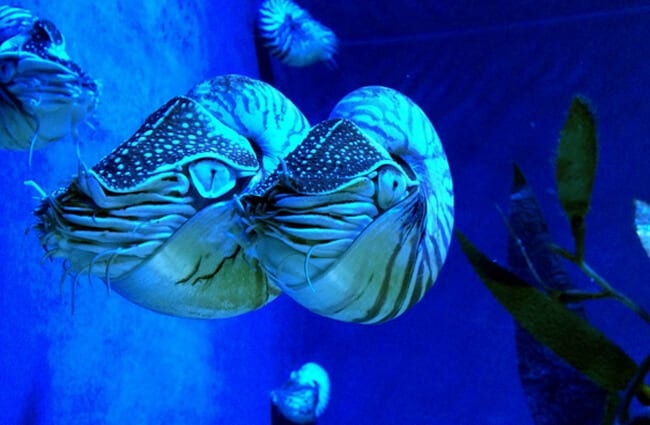
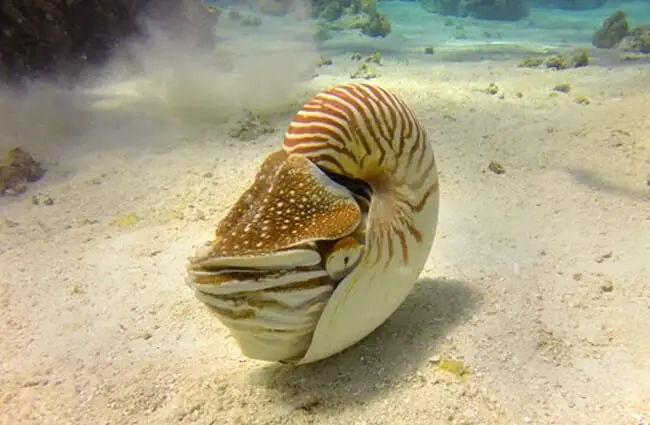
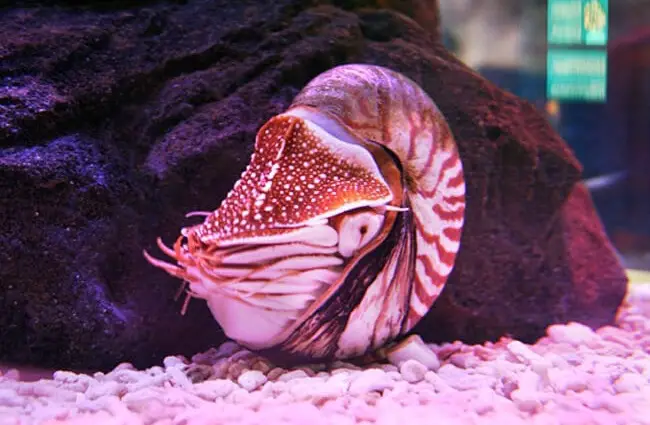
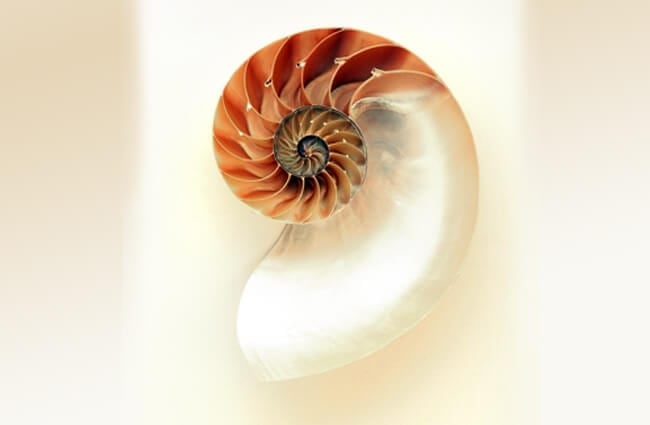

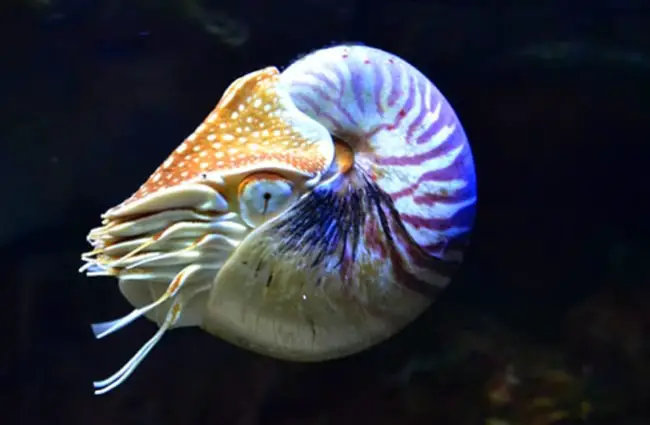
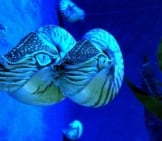
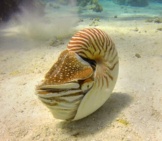
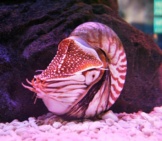

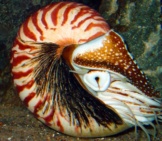
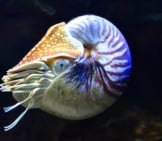
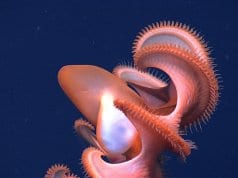
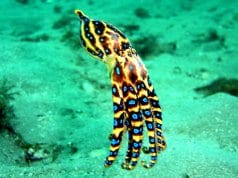











![Red Angus Closeup of a beautiful Red Angus cowPhoto by: U.S. Department of Agriculture [pubic domain]https://creativecommons.org/licenses/by/2.0/](https://animals.net/wp-content/uploads/2020/03/Red-Angus-4-100x75.jpg)

